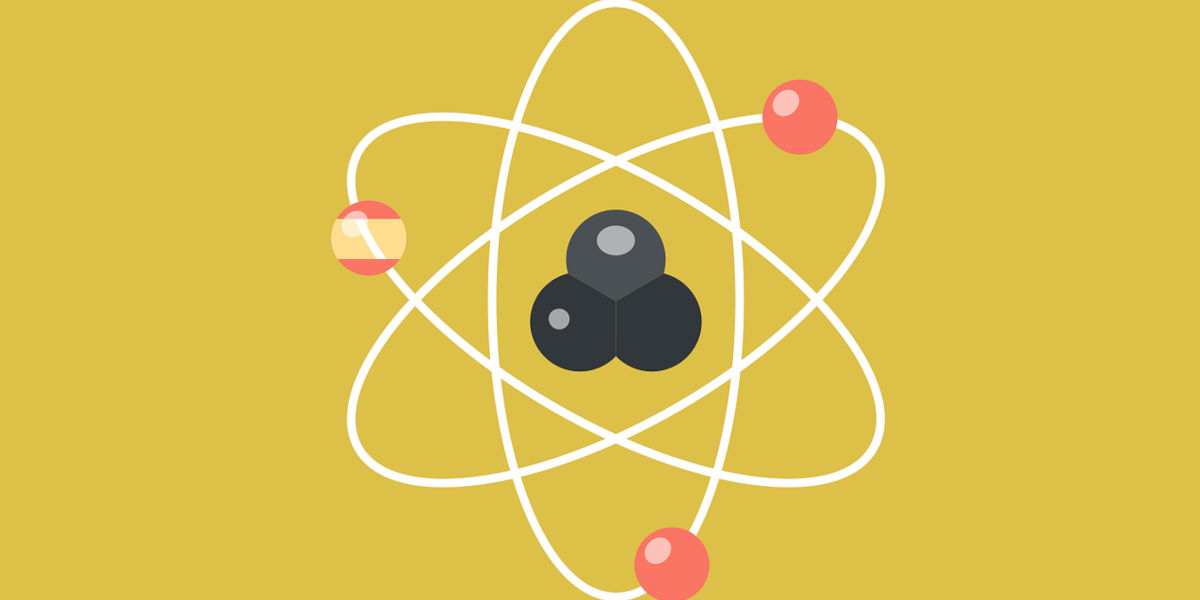If the universe is a symphony, quarks play the smallest, simplest and yet most elusive notes. These subatomic particles, the smallest constituents of matter that we know of, can't be seen or detected individually due to a peculiar behavior known as color confinement. Their existence and peculiar behaviors were found by conducting experiments using high-energy particle accelerators. But despite their mystery, one thing is certain: quarks are at the heart of matter. Let's dive into the wonderful world of quarks, exploring important aspects such as: what is a quark, quark combinations and how do quarks combine to form particles?
What is a Quark?
Quarks are elementary particles and a primary constituent of matter, discovered in the 1960s by Murray Gell-Mann and George Zweig. They hypothesized that quarks sit inside protons and neutrons and combine in specific ways to create these larger particles. These teeny tiny bits of matter that cannot be broken down further, hold the majority of the mass in a proton or a neutron. Quarks come in six "flavors": up, down, charm, strange, top, and bottom, with up and down being the most common ones. Each quark carries a fractional electric charge, either +2/3 (for up, charm, top) or -1/3 (for down, strange, bottom). This fractional charge is unique in the particle world as all other elementary particles carry a whole integer charge.
Quark Combinations
The most fascinating aspect of quarks is that they don't exist alone in nature. They are always found in specific groups or combinations. And it's these combinations that determine the identity of the larger particle to which quarks contribute. These combos are called composite particles or hadrons, and there are two main types: baryons and mesons.
Baryons consist of three quarks. The most familiar baryons to us are protons and neutrons, that make up the atomic nucleus. A proton is composed of two up quarks and one down quark, while a neutron consists of one up quark and two down quarks.
Mesons, on the other hand, consist of one quark and one antiquark (the antimatter counterpart of quarks). Mesons are usually created in high-energy collisions, like in particle accelerators, and are highly unstable.
How Do Quarks Combine to Form Particles?
So, how exactly do the quarks combine? The combining or "binding" of quarks comes from one of the four fundamental forces in the universe: the strong force (also known as the strong nuclear force). This force is incredibly strong -to the point where it is virtually impossible to tear the quarks apart. It acts at very small distances and not only does it bind quarks together to form protons, neutrons, and other particles, it also holds the atomic nucleus together.
The carriers of the strong force are particles called gluons. As the name suggests, they "glue" the quarks together. They are virtually massless, carry a color charge (unlike quarks, which carry fractional electrical charges), and are always exchanged between quarks, keeping them bonded together inside protons, neutrons, and other particles.
The fascination with understanding the minuscule particles that form the formidable universe we live in has been a driving force behind countless scientific endeavors. Today, we delve deeper into the enigmatic world of quarksóthe enigmatic particles that lie at the heart of matter itself.
Quarks were discovered in 1968 and are fundamental constituents of matter. Fascinatingly, quarks are never observed in isolation; they are always found in combination with other quarks or antiquarks as they form larger particles like protons and neutrons, composing atomic nuclei. This unique quirk of behavior is due to the strong forceóthe strongest of the four fundamental forcesó binding them together.
The Colorful World of Quarks
World of Quarks is often described as 'colorful' but not in the traditional sense of the word. What's referred to as ëcolorí is the metaphorical label for the types of charges quarks carry, which happens to be entirely different from the electrical charge. The three colorsóred, green, and blueóare purely notional and have no connection with actual colors. Yet, this simple metaphor allows the complex world of quantum chromodynamics to be more approachable in comprehending the interactions between quarks.
Just as RGB colors combine to form white light, the three ëcolorsí of quarksóred, green, and blueóblend together to form color neutrality. In other words, a proton or neutron (each composed of three quarks) appears 'colorless'. Any slight variation in this balance might lead to realignment, but the end effect is always a 'colorless' particle.
The Six Flavors of Quarks
The bizarre yet enchanting world of quarks consists not only of tri-colors but also six 'flavors'óup, down, charm, strange, top, and bottom. The 'up' and 'down' quarks are the common ones present in the protons and neutrons, the basic building blocks of the atomic nucleus while the other four are most notably seen in higher energy processes, such as those in particle accelerators.
Quarks and The Big Bang
Quarks, with their quirky behaviors, play a significant role in our understanding of the universe. The properties they exhibit, their colorful charges, and the flavors they possess, are thought to have been essential in the moments following the Big Bang. Theorists hypothesize that during this primordial soup episode, numerous quarks and antiquarks rapidly formed and annihilated each other, leaving behind a slight surplus of quarks. It is this surplus, organized through the strong force into protons and neutrons, which formed the nuclei of the lightweight elements of everything in today's universe.
Delving deep into the heart of matter, exploring the world of quarks, hints at the harmony and unity that pervades the cosmos. What may seem insignificant particles at first glance, bear profound implication towards the grandeur of the universe. In the end, the field of quark-ology is an emblem of the beauty and mystery that science is capable of unravelling, all the while propelling us towards a broader understanding of the universe in which we float.




